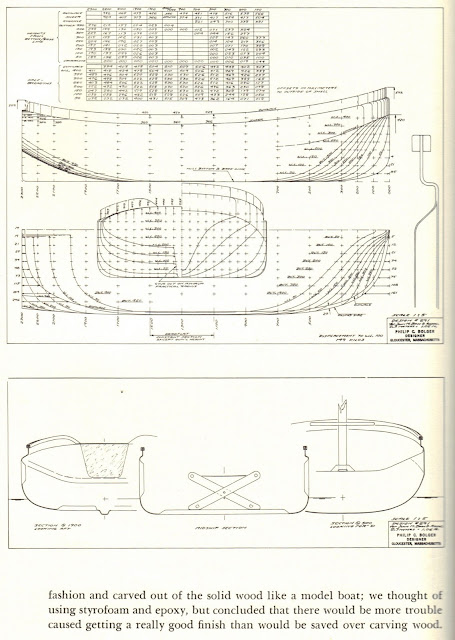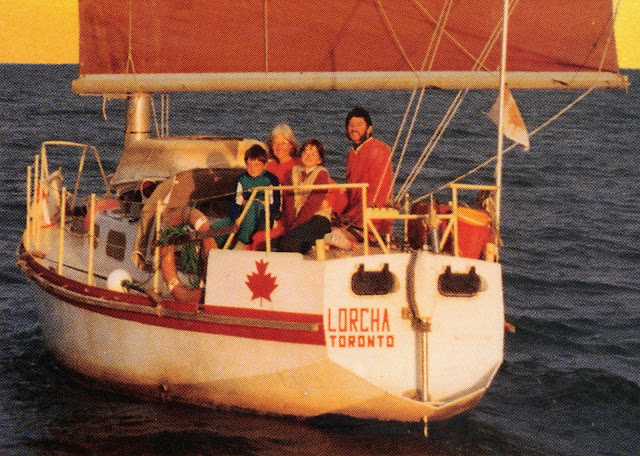The building of Puffin involved several skills; naval architecture, woodworking and fiberglass fabrication and was certainly a challenging project. The design approach is detailed in "the Folding Schooner" by Philip C. Bolger.
The following are quotes from the book and correspondence with Bolger.
Fiberglass fabrication requires a "plug" or full size model of the hull. Fiberglass molds are then made over the plug. The plug is removed & the fiberglass hull is "laid up" inside the mold.
Construction of the plug started with a "strongback", a level rectangular frame, on which a "keel" and "ribs", cut the match the stations in the plans, are mounted.
Notches in the keel & ribs help locate & secure them in place.


Next step - strip plank where possible & build up the bow layer cake fashion.
Carving allows the bow shape to emerge.
Next step the finished "plug" goes to the fiberglass shop & once the molded hull is received it is ready for fitting out.
A Puffin was chosen by Paul Howard & Fiona McCall as tender for Lorcha during their world circumnavigation. "All in the Same Boat" describes their Atlantic adventure.
"Still in the same Boat" continues their trek across the Pacific and Indian oceans and home to Canada.
Paul and Fiona were very pleased with Puffin's performance.
For several years a Puffin also served as tender to Drifter, a Albin 27, on Lake Superior, the North Channel of Lake Huron, Georgian bay, the Trent-Severn and Rideau waterways. See AlbinCruisers Information , http://www.albincruisers.blogspot.ca/
A quick sketch suggested that Puffin would fit over a small motor mounted on it own mount.
Detailed measurements indicated that no modifications were required to the swim platform or dinghy, but an extension to the motor mount (for the emergency outboard) was required.
Puffin is raised or lowered with lines
which are the ends of the bow line (painter) and stern line of the dinghy.
To raise Puffin, stand in the cockpit, snug up the lines & “snap up” the oarlocks & give a strong pull,
pushing on the transom with one leg.
The two supporting brackets are unclipped from the transom & clipped to the brackets on the dinghy seats. The lines are removed from the oarlocks & coiled for storage .
The coil is formed in one hand & a length of line
left loose to wind around the coil & to insert a loop between the coil
& the windings - the end of the line with the Bowline Knot is passed thru
the loop.
The lines are hung from the dinghy oarlocks for storage and easy access.
Skids provide protection on rocky or sandy shores.
Puffin & crew explored many isolated anchorages.
Puffin also provided enjoyable sailing around many anchorages and their environs. The sailing rig design, fabrication and setup is described in another blog.
Puffin makes a pretty picture at anchor.





























No comments:
Post a Comment